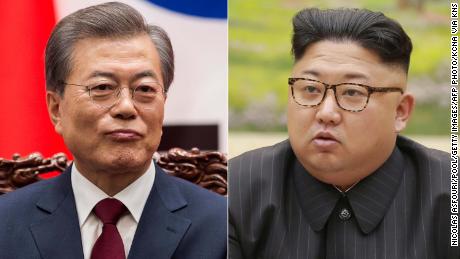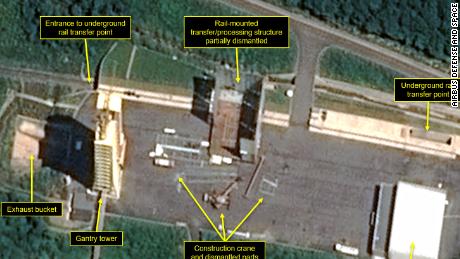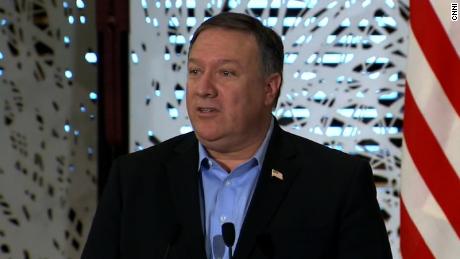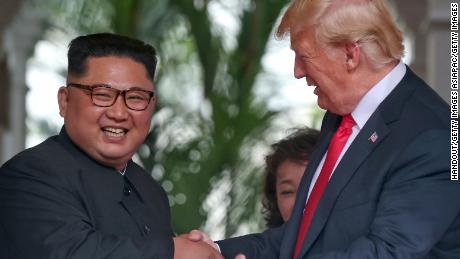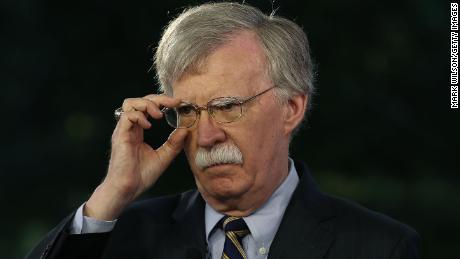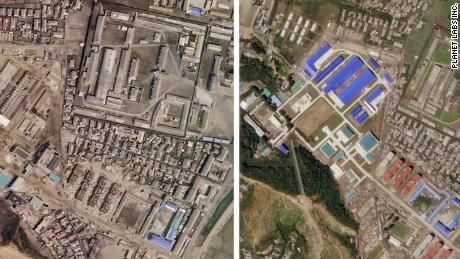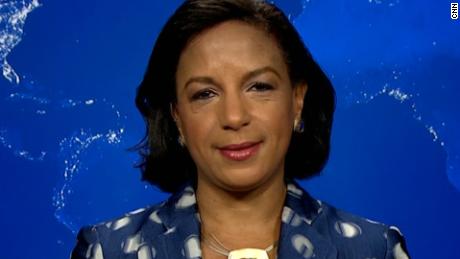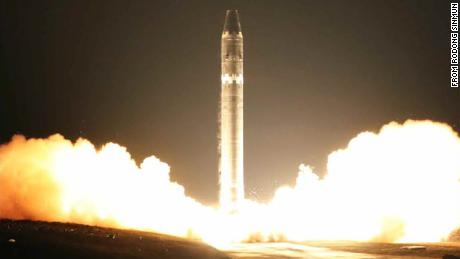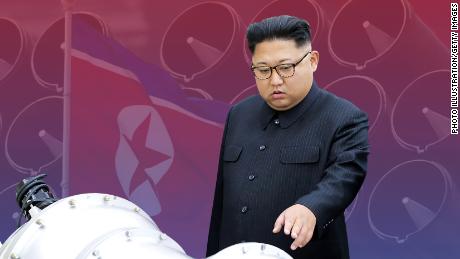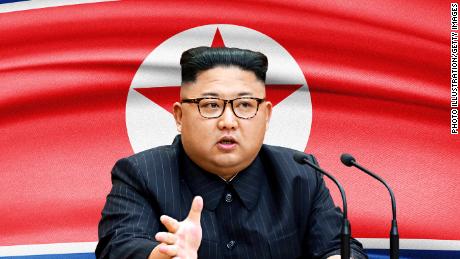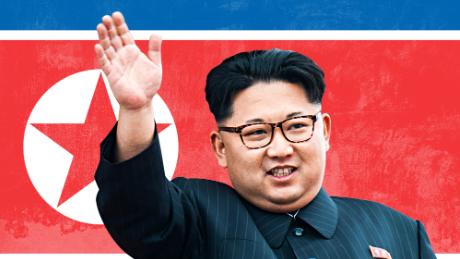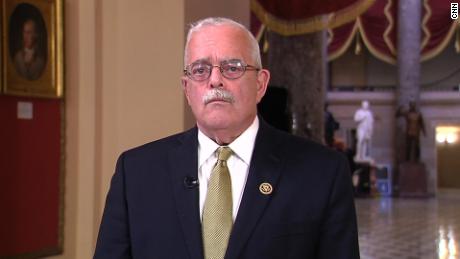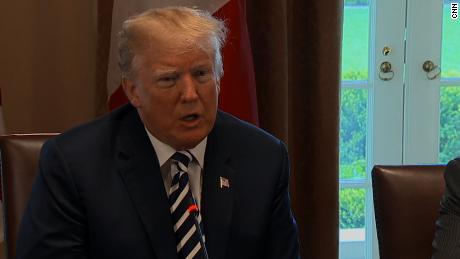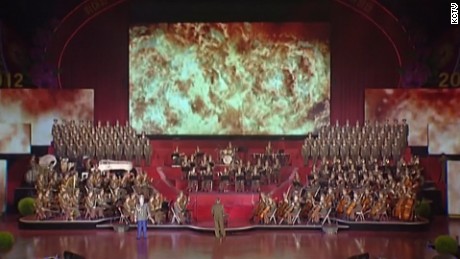Story highlights
- North Korea and South Korea both held military drills on Tuesday
- Artillery drills are a reminder of Seoul's vulnerability if North Korea attacked, analyst says
(CNN)North Korea has staged its largest ever military drill to mark the founding of the country's army, amid rising tensions with the West.
A statement from the South Korean military said the live-fire exercises were in the Wonsan region in the east of the country Tuesday afternoon, but gave no details on what kinds of weapons and military units took part in the drill.
On Wednesday, CNN was told by a North Korean government official with knowledge of the event that it was the largest ever drill conducted by the country's military and involved 300 artillery guns.
North Korean leader Kim Jong Un gave the order to start the demonstration, where the large-caliber self-propelled guns lined up along the coast opened fire, state news agency KCNA reported Wednesday.
In a statement from the South Korean Joint Chiefs of Staff, South Korea said it was monitoring the situation and remained "firmly prepared."
"Our military is closely monitoring the North Korean military's movements," said the statement.
Military exercises such as the one undertaken by North Korea are not unprecedented and it was always likely there would have been a show of military force on Armed Forces Day. This year is the 85th anniversary of the founding of North Korean army.
But the timing, as the US increases its military presence in the area, allows North Korea to remind its opponents that it could cause crippling damage with conventional artillery to highly populated areas in South Korea.
In a statement after the artillery drills were confirmed, the South Korean President's Office said an emergency meeting had been held to discuss the situation.
Separately, envoys from South Korea, Japan and the US have been meeting in Tokyo to discuss North Korea's refusal to abandon its nuclear program.
North Korea's drills coincided with military exercises held by US and South Korean navies in the Yellow Sea, off the western coast of the Korean Peninsula.
Earlier Tuesday, a US submarine made a port call in South Korea in what US officials said was a show of force amid mounting tensions in the region.
A CNN team in North Korea said citizens in the streets of Pyongyang were celebrating Armed Forces Day, with no visible signs of tension.
Message to Seoul?
Alex Neill, a senior fellow at the International Institute for Strategic Studies Asia, told CNN the artillery drill was likely to be a message to Seoul.
"It's important for the DPRK to remind the South that very large swathes of the South Korean population are within artillery range of the North," he said, using the official name for North Korea.
"So it is a sign that if the North is provoked or there is preemptive action, then a lot of Seoul and its suburbs would be within artillery range of the North."
Neill said nuclear and chemical weapons could also be delivered via artillery strikes.
"As (North Korea has) one of the largest stockpiles of chemical weapons, again artillery can be used for that. Sarin gas doesn't have to be dropped," he said.
Trump: North Korea is 'a real threat'
Relations between North Korea and the US and South Korea have deteriorated in recent months, as the rhetoric and military posturing on both sides has increased.
There have been occasions in the past when political tensions have reached crisis point -- most recently in April 2013 -- but Trump's firm rhetoric on North Korea in recent weeks is unusual for a US leader.
Fears have also mounted in recent weeks that North Korea could soon conduct a sixth nuclear test or another missile launch.
On Monday, US President Donald Trump said the status quo with nuclear-armed North Korea was unacceptable, calling for new sanctions on the country.
"This is a real threat to the world, whether we want to talk about it or not," Trump said at a lunch for ambassadors of countries who sit on the Security Council.
"North Korea's a big world problem, and it's a problem we have to finally solve. People put blindfolds on for decades and now it's time to solve the problem."
The Trump administration has taken the unusual step of calling the entire US Senate to a meeting at the White House, for a briefing on North Korea with the US secretaries of Defense and State.
Some analysts voiced concerns Trump was backing himself into a corner with his fierce rhetoric on North Korea, leading both countries to a point where "bad things are going to happen."
USS Vinson deployed as tensions build
Earlier this month, the Trump administration announced it would be sending the USS Vinson, an aircraft carrier, to the Korean Peninsula, after US officials said they anticipated a fresh round of nuclear tests and missile launches.
Its deployment was met with threats by the North Koreans.
State-run newspaper Rodong Sinmun said over the weekend in an editorial the country could sink a "nuclear-powered aircraft carrier with a single strike."
North Korea held an enormous military parade held to celebrate the anniversary of the birth of the country's founder, Kim Il Sung on April 15.
Prior to the celebrations, satellite images had shown the rogue state could be preparing for another nuclear test.
In the end, no nuclear test was held that day, but a performance on the Day of the Sun still showed a propaganda video where missiles struck the United States and a US flag was left in flames.


